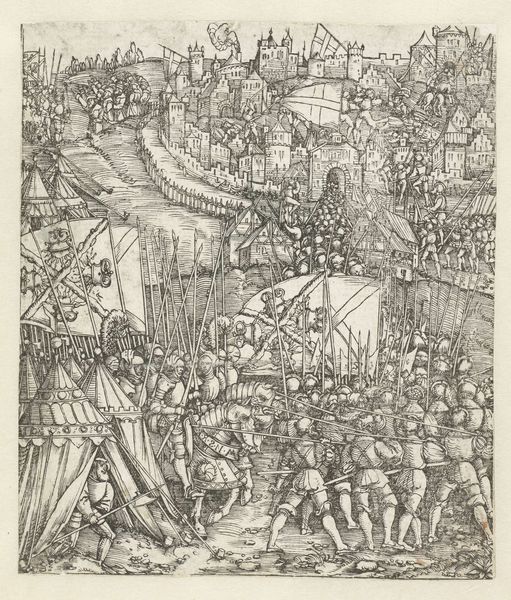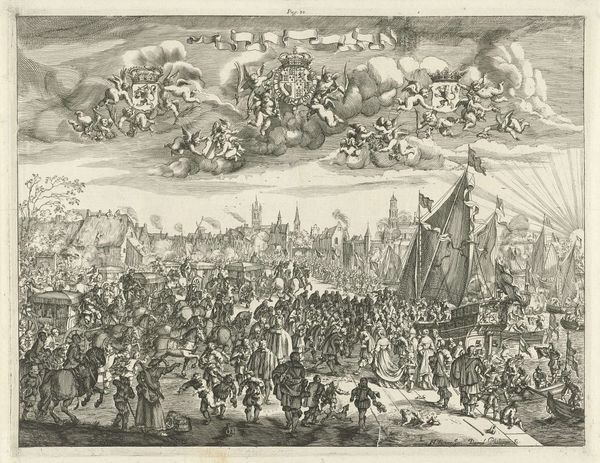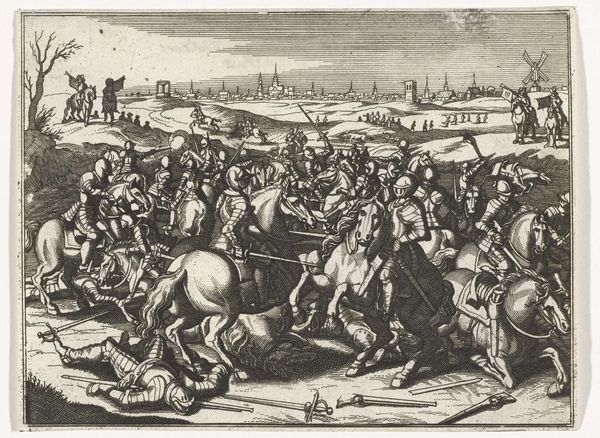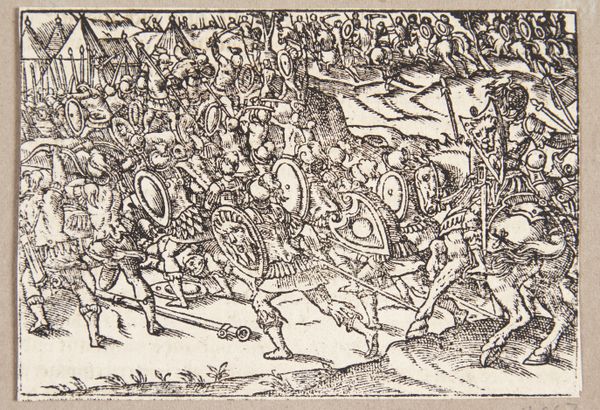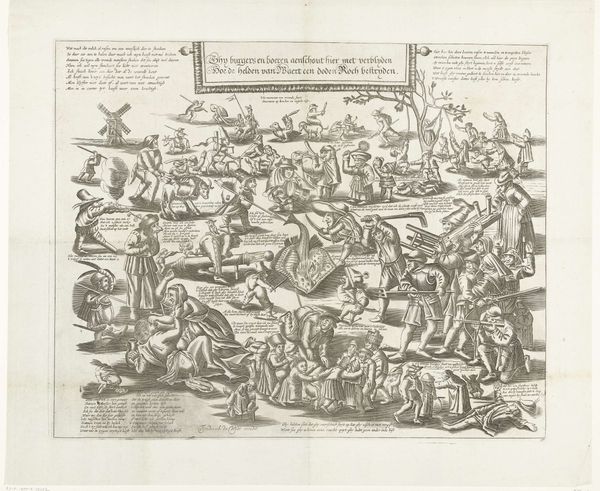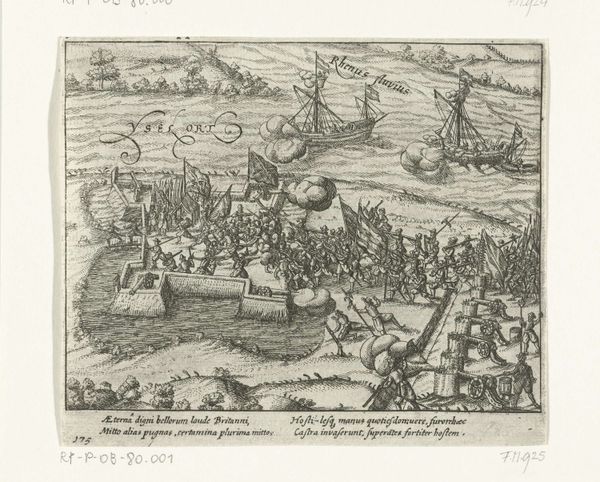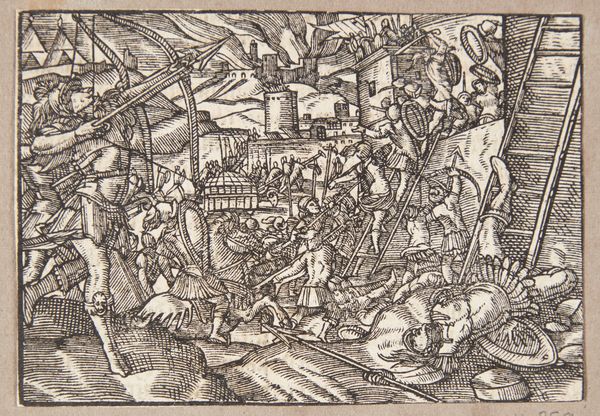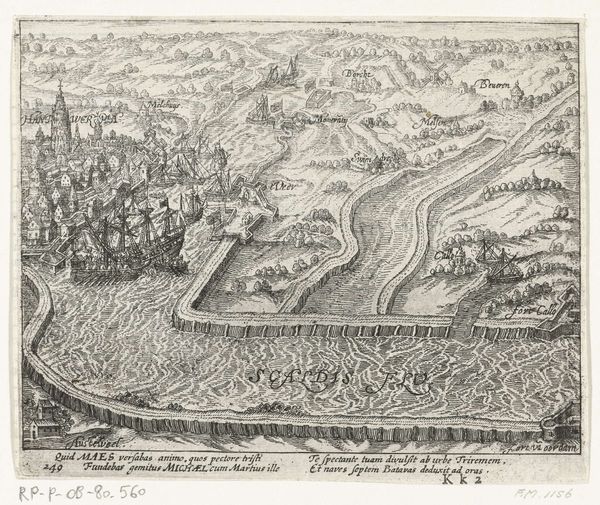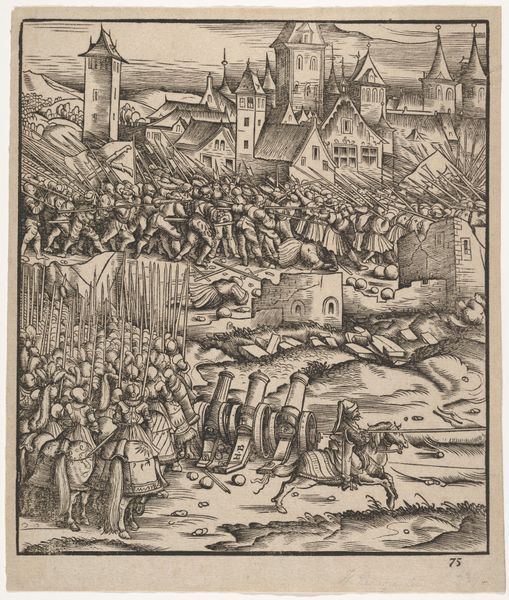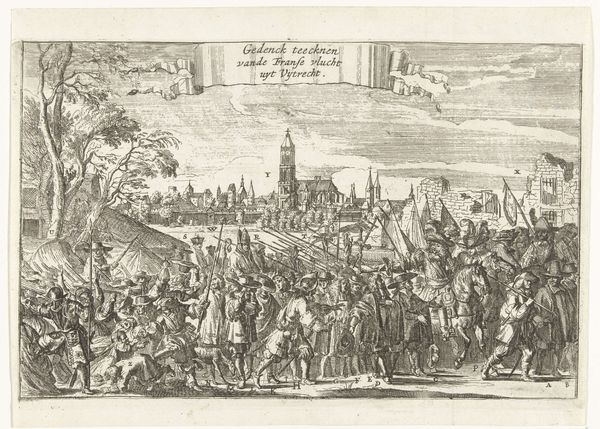
print, intaglio, engraving
#
rippled sketch texture
#
medieval
#
pen drawing
#
neat line work
# print
#
pen sketch
#
intaglio
#
old engraving style
#
landscape
#
figuration
#
ink line art
#
linework heavy
#
pen-ink sketch
#
thin linework
#
line
#
pen work
#
history-painting
#
engraving
Dimensions: height 64 mm, width 265 mm, width 236 mm
Copyright: Rijks Museum: Open Domain
Editor: Here we have “Fries met een ruiterslag”, or “Frieze with a Cavalry Battle,” an engraving made by an anonymous artist sometime between 1549 and 1591. Looking at all the activity depicted through these lines, I wonder, what am I really seeing here? Curator: What strikes me is the labor embedded in the creation of this image, right? Think about the production: the tools, the ink, the press… It points to a sophisticated workshop practice, making imagery available, reproducible. It speaks volumes about the material conditions that allowed such art to flourish. Do you consider how printmaking democratized images? Editor: I do, but it seems to depict something that would be reserved to elites... all those horses, that big army... how do you reconcile this? Curator: The consumption of these images can be analyzed as the rise of a certain merchant class, but look closer: What about the paper itself? Its origins? Where would the copper come from for the intaglio plate, and who mined it? This object implies long trade networks and exploitation. Editor: So the battle represents some conquest that we see through an exploitative perspective? Curator: Perhaps. This image would be meant for contemplation and ownership, its availability made possible by the exploitation inherent in its materials. Can you now see that the *means* of production become just as significant as the *subject* depicted? Editor: I guess I do... It definitely wasn't something I'd thought about, that it all comes from exploitation of some kind. Curator: Exactly! By acknowledging that history, we complicate the aesthetic appreciation and challenge the presumed neutrality of art. We bring visibility to previously obscured material relations. Editor: That's certainly made me see this anonymous print in a new light – one that stretches beyond the image itself!
Comments
No comments
Be the first to comment and join the conversation on the ultimate creative platform.
